Charlie Mackesy on The Boy, the Mole, the Fox and the Horse: 'It's humbling... The reaction was beyond anything I ever imagined'
Charlie Mackesy is the author and illustrator of The Boy, the Mole, the Fox and the Horse, the bestselling — and hugely poignant — book that celebrates kindness and understanding. He spoke to Katy Birchall about why there’s no shame in showing weakness and asking for help.
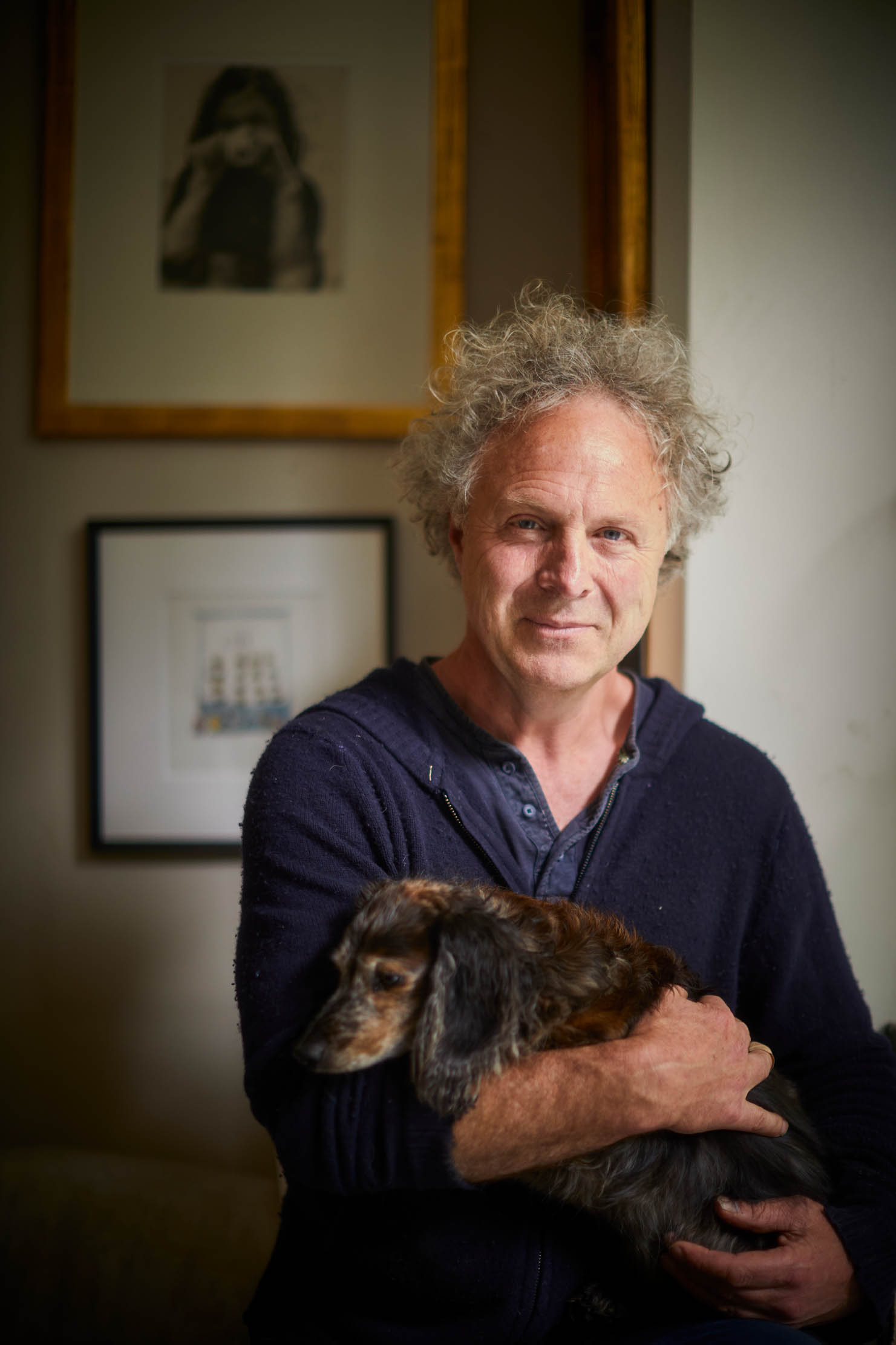

Charlie Mackesy insists he isn’t any good at small talk: ‘I’m useless. I like talking about things that really matter. I love conversation. That’s how all of this started — I was talking with a very good friend about courage. I began drawing that conversation and, from there, I let it unfold.’
The illustrator and author is referring to his bestselling book, The Boy, the Mole, the Fox and the Horse, which has become something of a phenomenon. It’s the touching tale of a curious boy and his journey with a cake-obsessed mole, a world-weary fox and a wise horse that is told through the conversations between these four unlikely companions, their adventures brought to life by the author’s own exquisite illustrations.
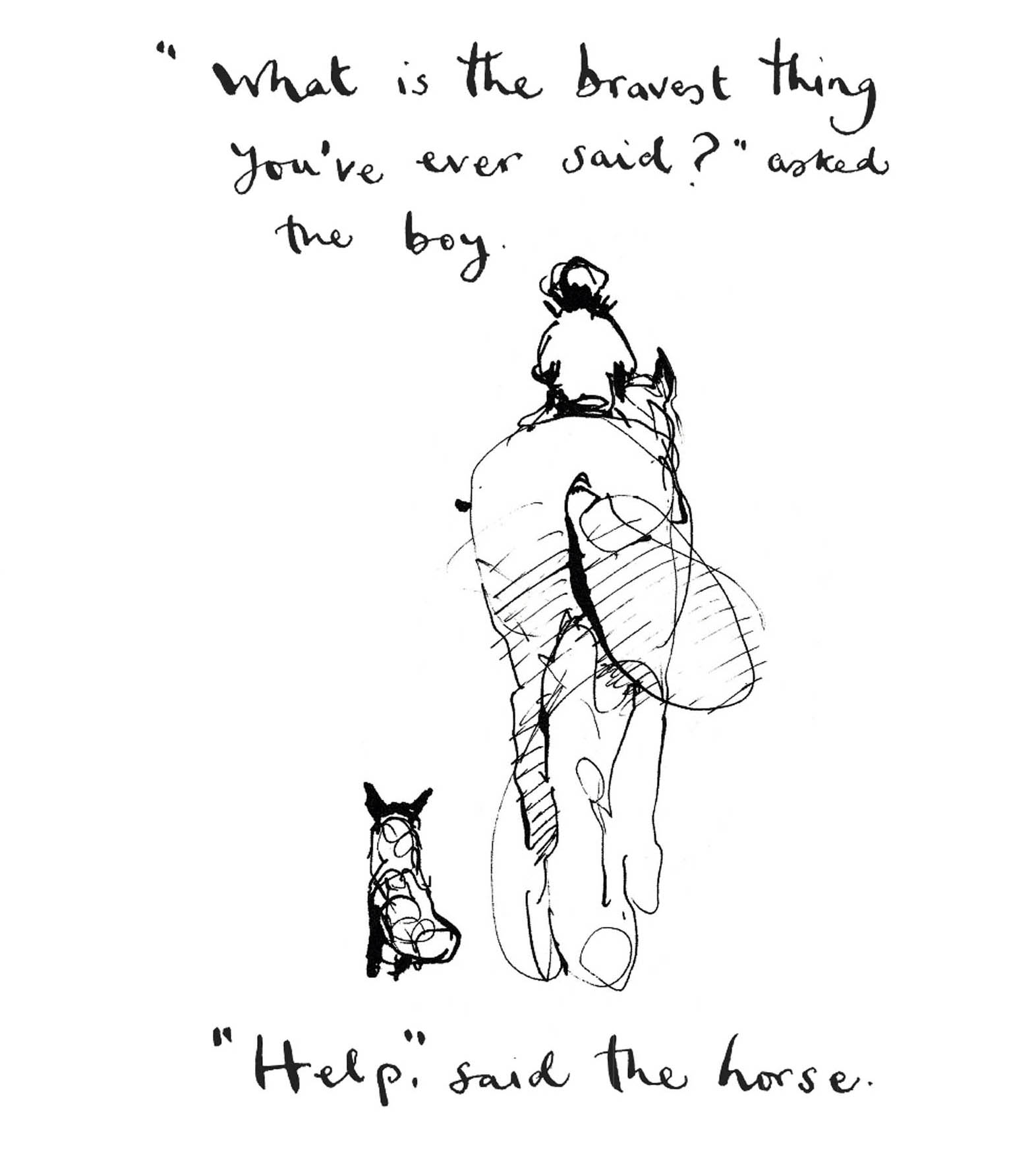
Each turn of the page presents another scene framed by calligraphic messages of kindness, compassion and vulnerability; it’s a book which can be read cover-to-cover, but seems even more so to work as a dip-in-dip-out pick me up.
Published in October 2019, it has sold more than one million copies, becoming an invaluable source of comfort and positivity during a year like no other. Charlie’s art is pinned up in hospitals, schools and homes all over the world, his gentle words of profound wisdom providing reassurance and hope as life changed and we found ourselves grappling with the fear and anxiety of a pandemic.
‘It’s a privilege that the book has helped others. I’m so pleased it speaks to people and gives courage,’ Charlie admits.
‘When I started these drawings, I was thinking a lot about what people really want in life; what we fear and why we fear it; what we hope for and what we dream of. Now and again, I would post a drawing on Instagram of a conversation surrounding all these things. The reaction was beyond anything I ever imagined.’
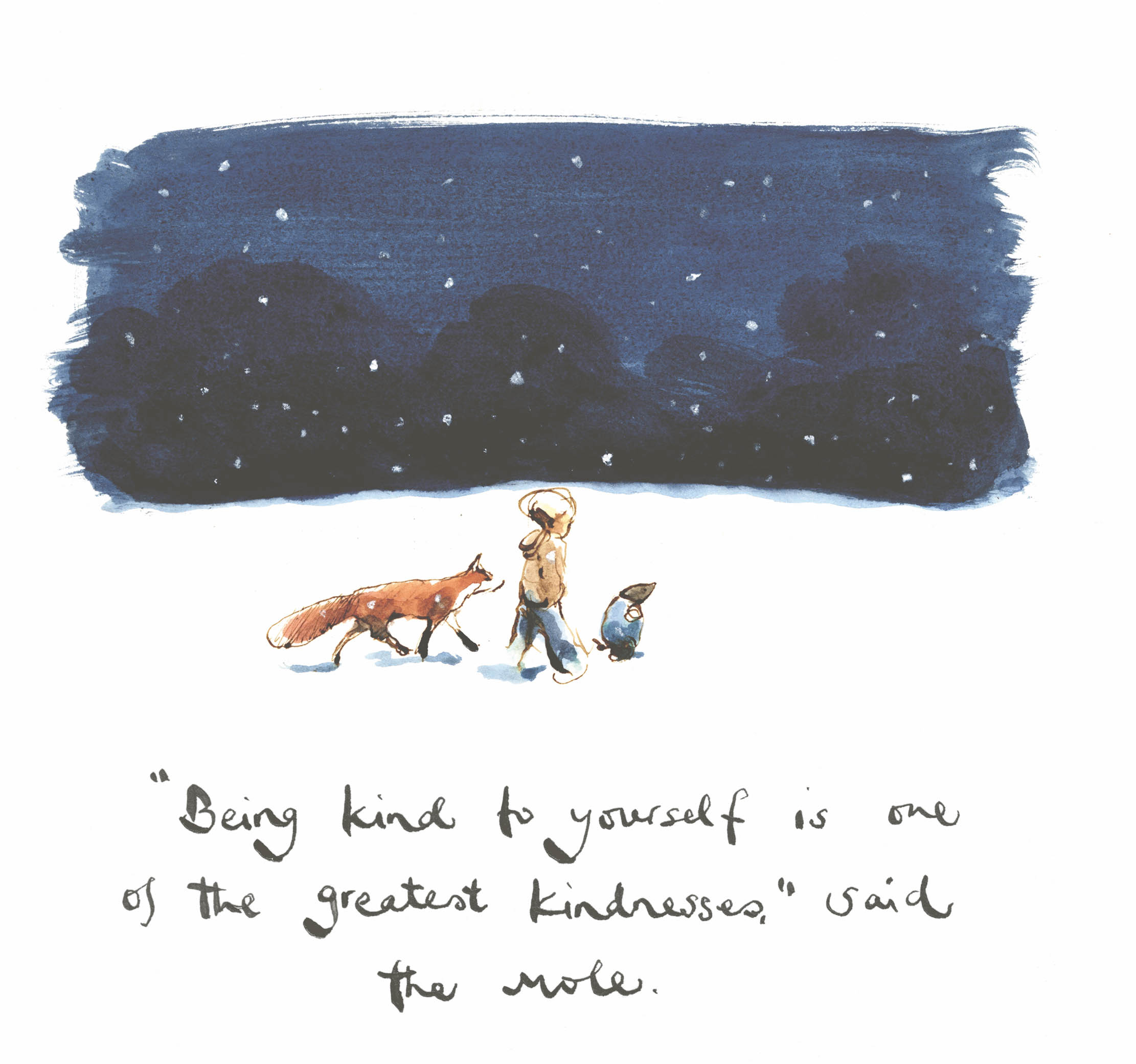
The drawing that went viral on social media, sparking the stratospheric rise of Charlie’s four cherished characters and his consequent book, is one that lays bare our often misguided measures of courage and the strength it takes to reach out. The young boy sits astride the horse with the mole, the fox trotting along by their side, their conversation floating around the illustration in swirly black ink: ‘What is the bravest thing you’ve ever said?’ asked the boy. ‘Help,’ said the horse.
Sign up for the Country Life Newsletter
Exquisite houses, the beauty of Nature, and how to get the most from your life, straight to your inbox.
Not long after posting it on Instagram, Charlie was receiving grateful emails from healthcare workers, teachers and therapists as far afield as Canada and Australia, telling him that the illustration was up on their walls. It became an effective tool for discussions around mental health, with the British Army using it to help soldiers suffering with post-traumatic stress disorder.
‘It formed from the idea of how I was at my strongest when I was showing weakness,’ he explains.
‘That was never really around when I was a boy. You had to be tough, armour-plated. But there are other ways of being strong. There is no shame in asking for help.
‘We don’t have to pretend. We’re all the same, really. I think real closeness comes from vulnerability and the book is a journey into closeness and honesty. It didn’t come about because I wanted to make a book. It came out of the characters’ conversations about what I felt really mattered.’
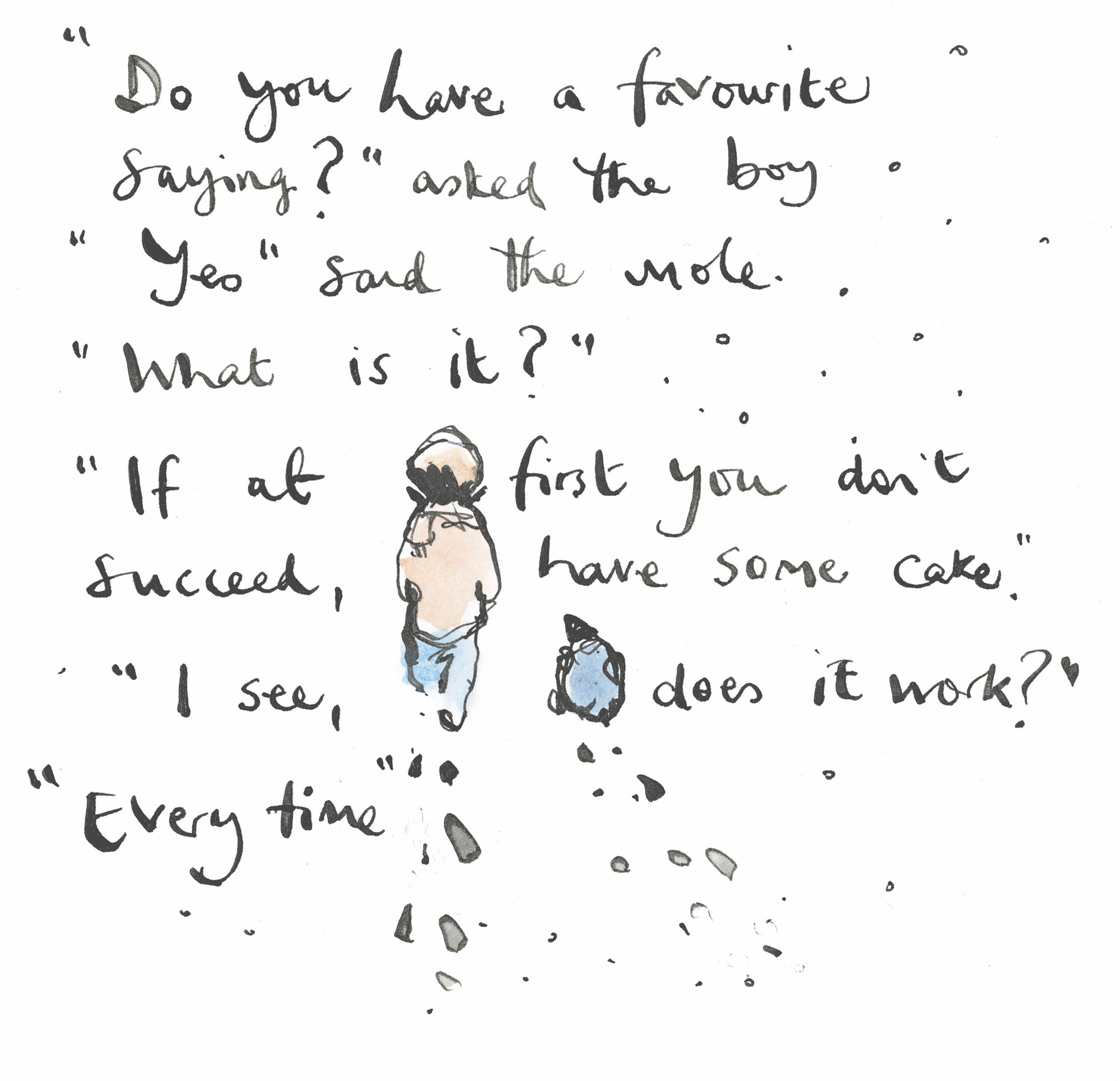
Having resided in Brixton, London, for years, Charlie has recently spent several months on the Suffolk coast, growing accustomed to the quiet — ‘I’ve disappeared into rural existence. I can’t quite imagine London now’ — a lifestyle akin to his upbringing in Northumberland. Considering the serene landscapes depicted in his drawings, it is no surprise to hear that the countryside was a major influence on his work.
‘I wanted the images to give comfort and I think Nature is a very soothing environment. It seemed an uncluttered, relaxing context in which to put the characters,’ he says.
‘When I was younger, I spent most of my days wandering around fields and sitting on the hillside, gazing out and thinking.’
Even Country Life played a part: ‘I was brought up with the magazine,’ he adds fondly. ‘I remember looking at the pictures in it before I could read.’
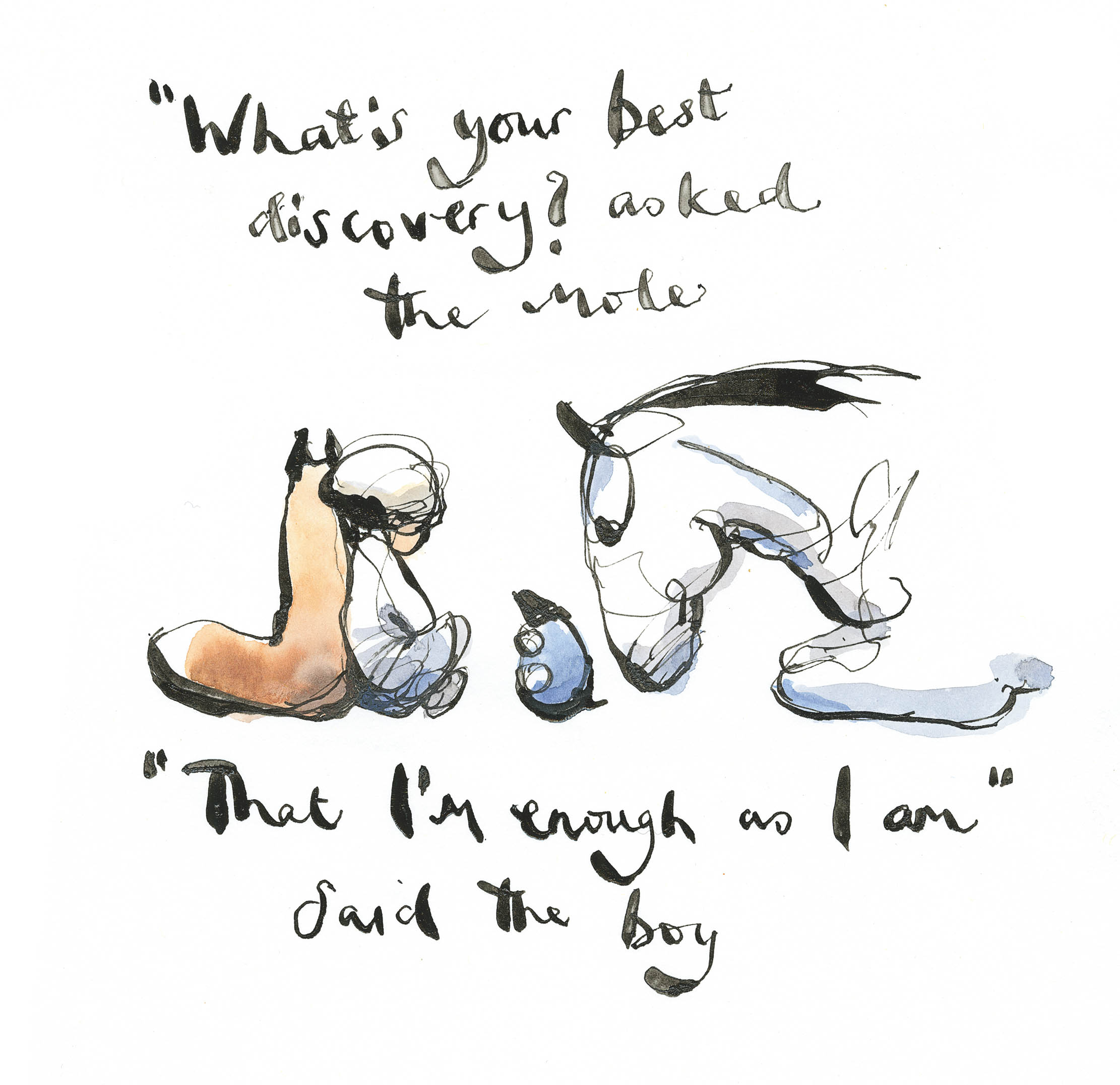
Growing up surrounded by farmland naturally instilled a deep love of and appreciation for wildlife, his admiration revealing itself in his art.
‘We trust them,’ he enthuses. ‘There’s an innocence and openness about animals. The creatures in the book aren’t preaching at anyone, they’re simply discussing things. I liked how that felt.’
There were horses on his family’s land and Mr Mackesy recalls often drawing them as a child. ‘We had a horse when I was little and my sister Sara is a brilliant rider. I draw them a lot and am fascinated by their strength and gentleness. The velvety nose of the horse; the way you can rest your head against it. I love their tenderness and their power. It’s an extraordinary paradox.’
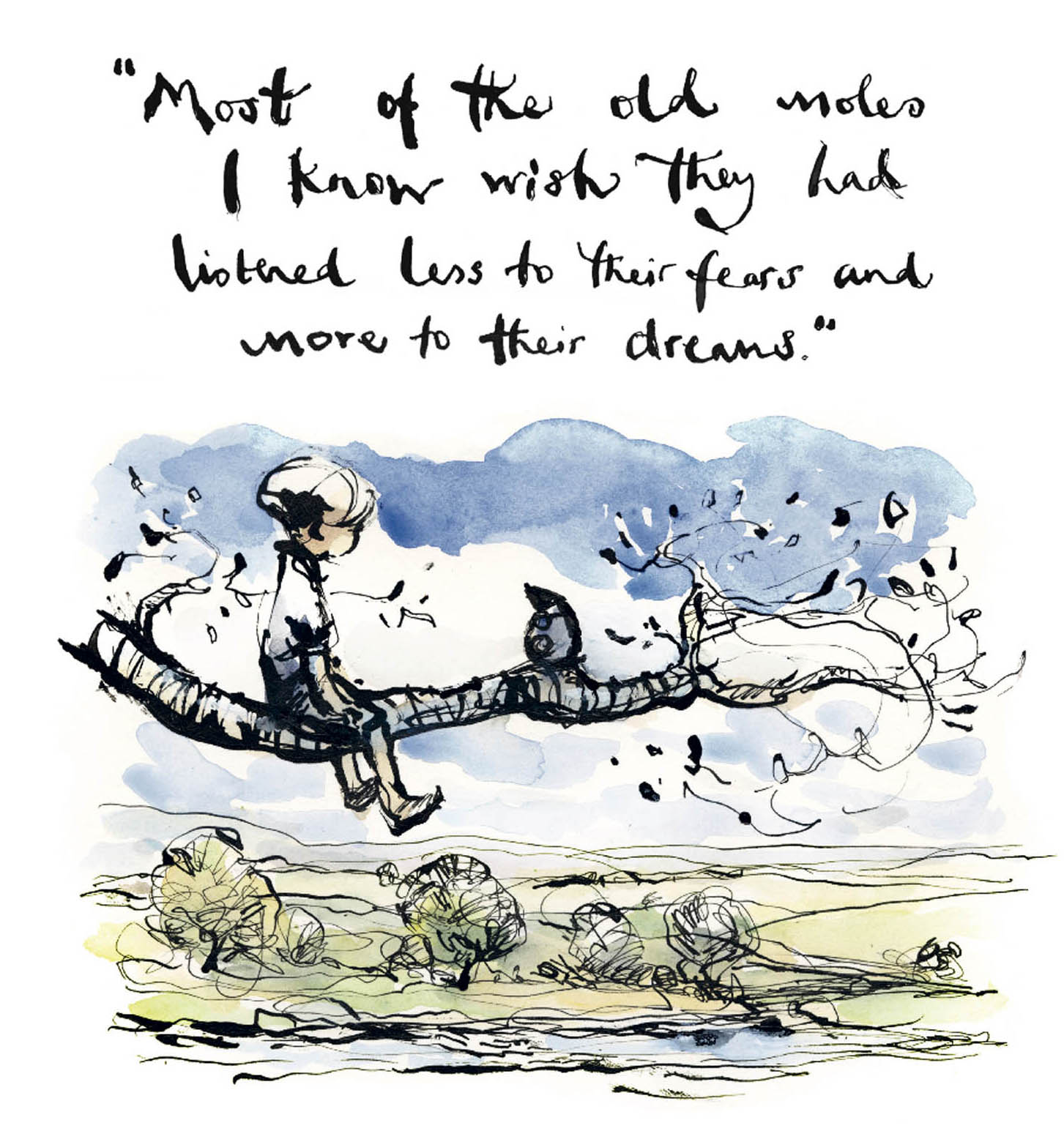
Together with a nod to his mother, the book is dedicated to his ‘wonderful dog, Dill’, a loyal companion who passed away last year.
‘She was an old labrador-collie cross — the most extraordinary dog and love of my life,’ he says. He still has Barney, a charming dachshund who, he admits, laughing, shares striking similarities with the mole: ‘Greedy, enthusiastic, with a pointy little nose.’
With a passion for the outdoors and scribbling cartoons from an early age, Mr Mackesy was educated at Radley College, Oxfordshire, and attempted university twice, but each time left early on.
He explains he started ‘really drawing’ when his best friend was tragically killed in a car crash at the age of 19.
‘We shared a house, we were young farmers. It suddenly propelled me into thinking about life. I picked up a pen, I began drawing and that was it. I couldn’t stop,’ he says. Starting out as a cartoonist for The Spectator and a book illustrator for Oxford University Press, he went on to exhibit in London, Edinburgh and New York.
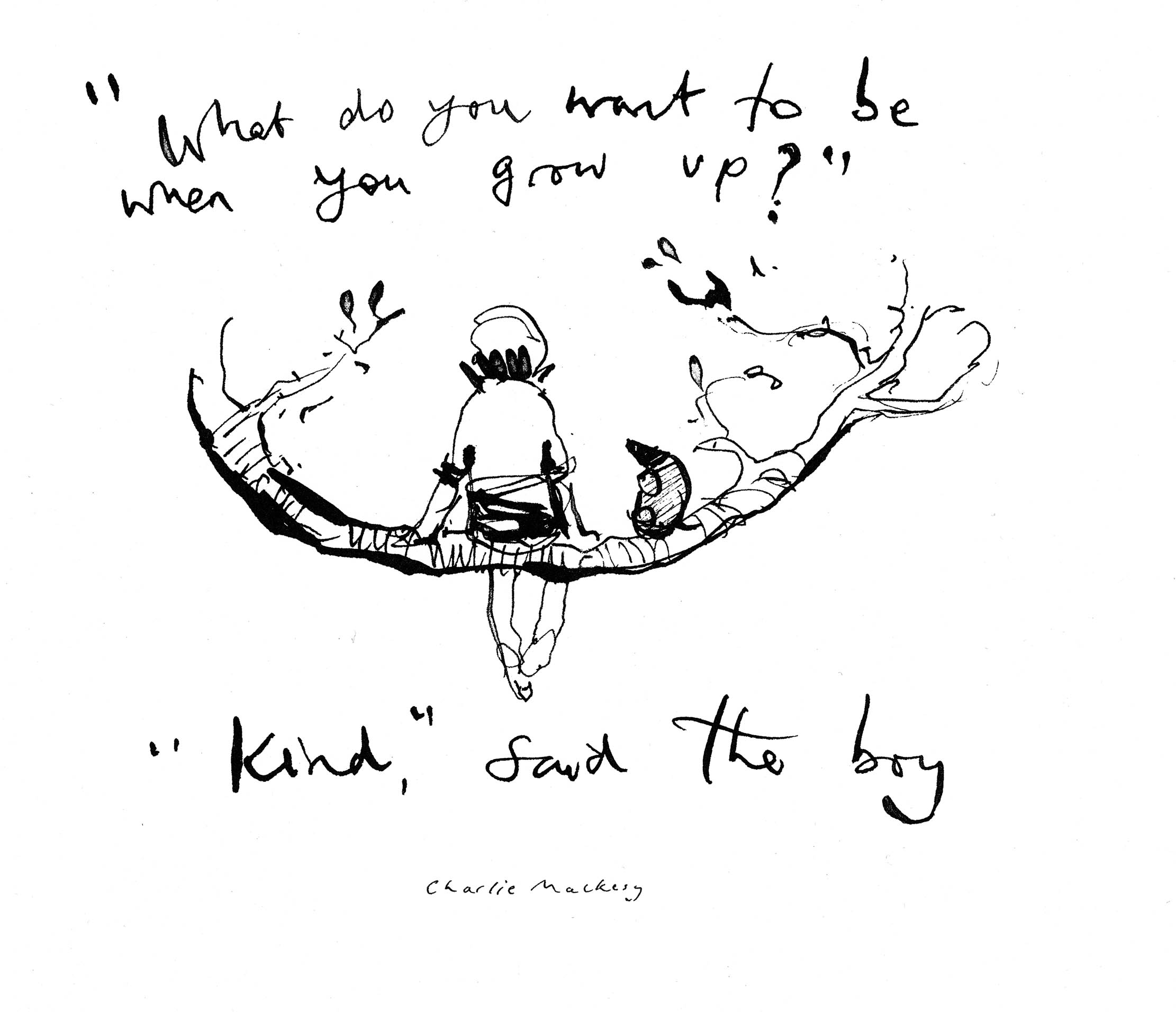
Charlie continues to be surprised by the overwhelming response to his book. ‘It’s very humbling,’ he concedes. ‘It moves me to hear about how it has helped others, especially this year.’
That a story about kindness and finding the courage to share struggles, fears and dreams has resonated so deeply with such a diverse audience reveals a truth that, although it may sometimes feel like it, we’re not in this alone. As they face dark clouds together, the horse bows so that the boy may rest his forehead against that velvety nose. ‘This storm will pass’, it reads underneath.
Mr Mackesy admits that, now he has fallen into step with the four characters, he’s not quite ready to leave them behind. ‘I’ve entered their world and I can’t seem to exit it. I’m stuck there. With everything going on at the moment, sometimes it’s nice to be taken to another land and I think their land is somewhere I quite enjoy being,’ he concludes with a smile. He’s not the only one.
‘The Boy, the Mole, the Fox and the Horse’ is published by Ebury Press (£16.99)
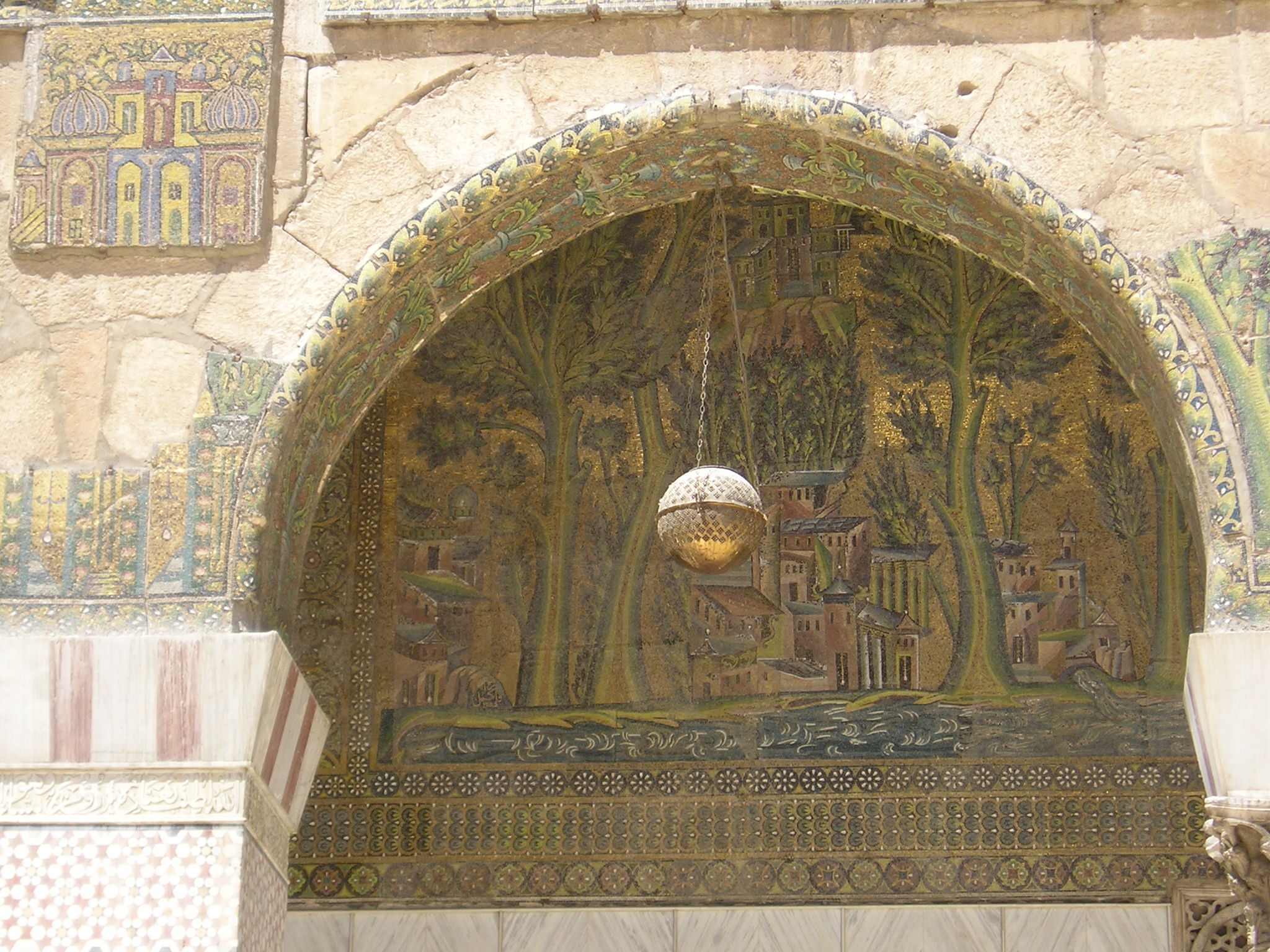
Seven astonishing books to read which will change your understanding of the history of the world
If you were left a tad disappointed by your Christmas presents, you can console yourself with two things. Firstly, by
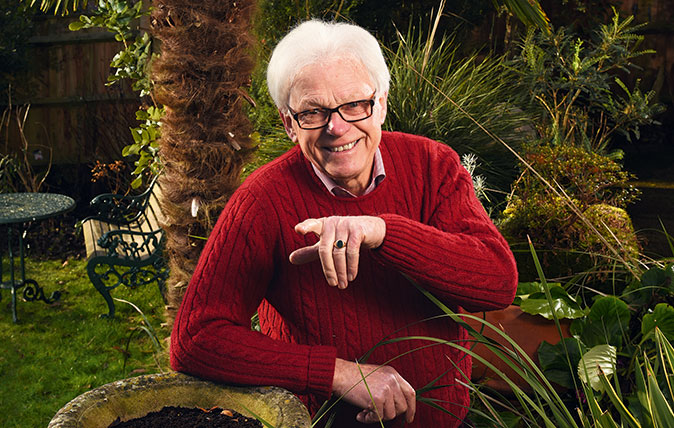
Credit: John Millar / Country Life
Roy Lancaster: 'The world would be a better place if politicians were forced to spend time gardening'
Jonathan Self caught up with Roy Lancaster, one of the most recognisable faces in British gardening.

How a collection of first editions can make your personal library just that little bit more special
Few things are more alluring than a spectacularly beautiful library within a fine country house. But should you be fortunate
-
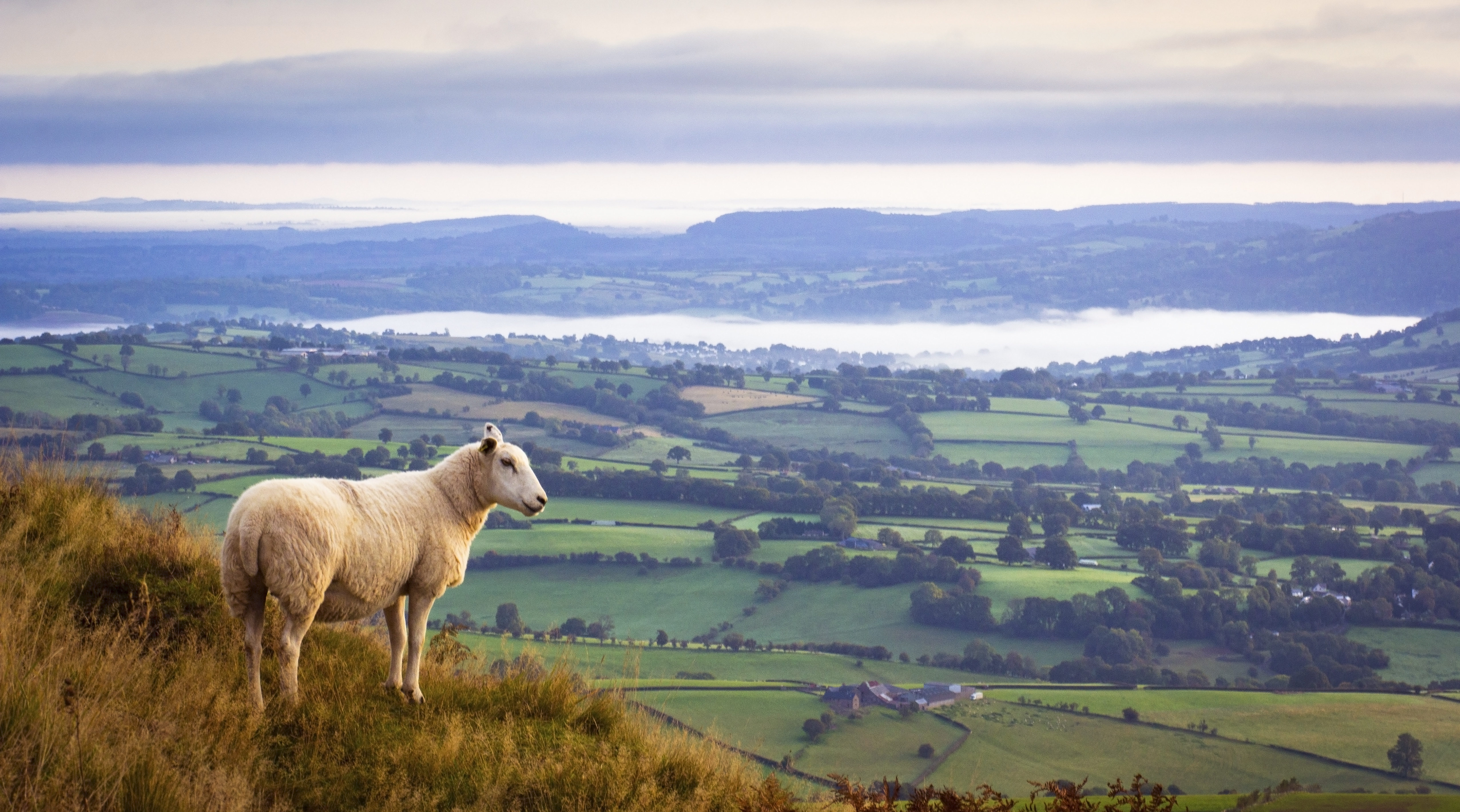 Minette Batters: 'It would be wrong to turn my back on the farming sector in its hour of need'
Minette Batters: 'It would be wrong to turn my back on the farming sector in its hour of need'Minette Batters explains why she's taken a job at Defra, and bemoans the closure of the Sustainable Farming Incentive.
By Minette Batters Published
-
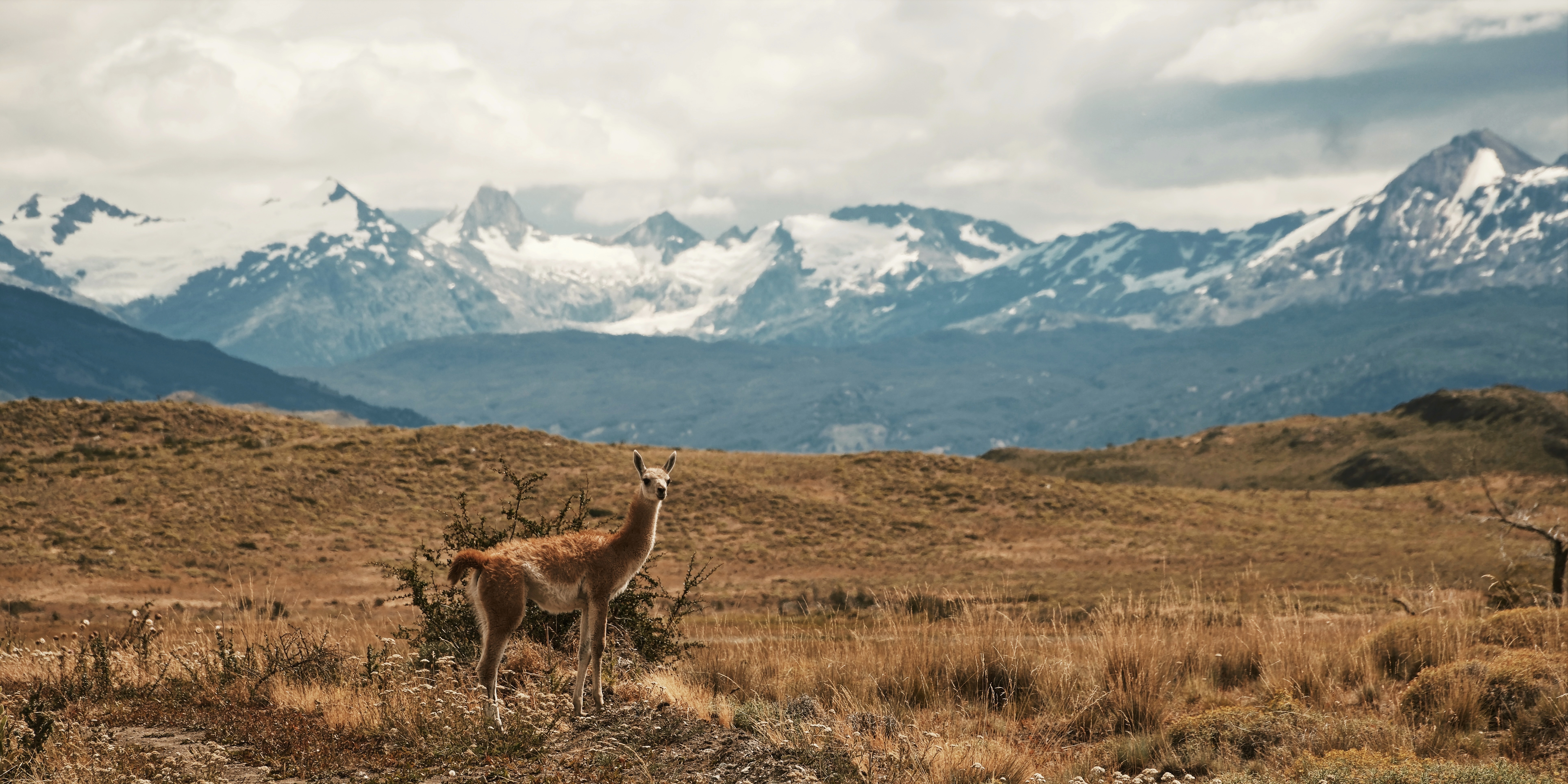 'This wild stretch of Chilean wasteland gives you what other National Parks cannot — a confounding sense of loneliness': One writer's odyssey to the end of the world
'This wild stretch of Chilean wasteland gives you what other National Parks cannot — a confounding sense of loneliness': One writer's odyssey to the end of the worldWhere else on Earth can you find more than 752,000 acres of splendid isolation? Words and pictures by Luke Abrahams.
By Luke Abrahams Published
-
 The birds of urban paradise: How to get twitching without leaving the city
The birds of urban paradise: How to get twitching without leaving the cityYou don't need to leave the concrete jungle to spot some rare and interesting birds. Here's a handy guide to birdspotting in Britain's towns and cities.
By Richard Smyth Published
-
 Food with a pinch of salt: The crops we can harvest from the sea
Food with a pinch of salt: The crops we can harvest from the seaFilling, rewarding and nutritious, vegetables and plants grown in saline environments — whether by accident or design — have plenty of potential. Illustration by Alan Baker.
By Deborah Nicholls-Lee Last updated
-
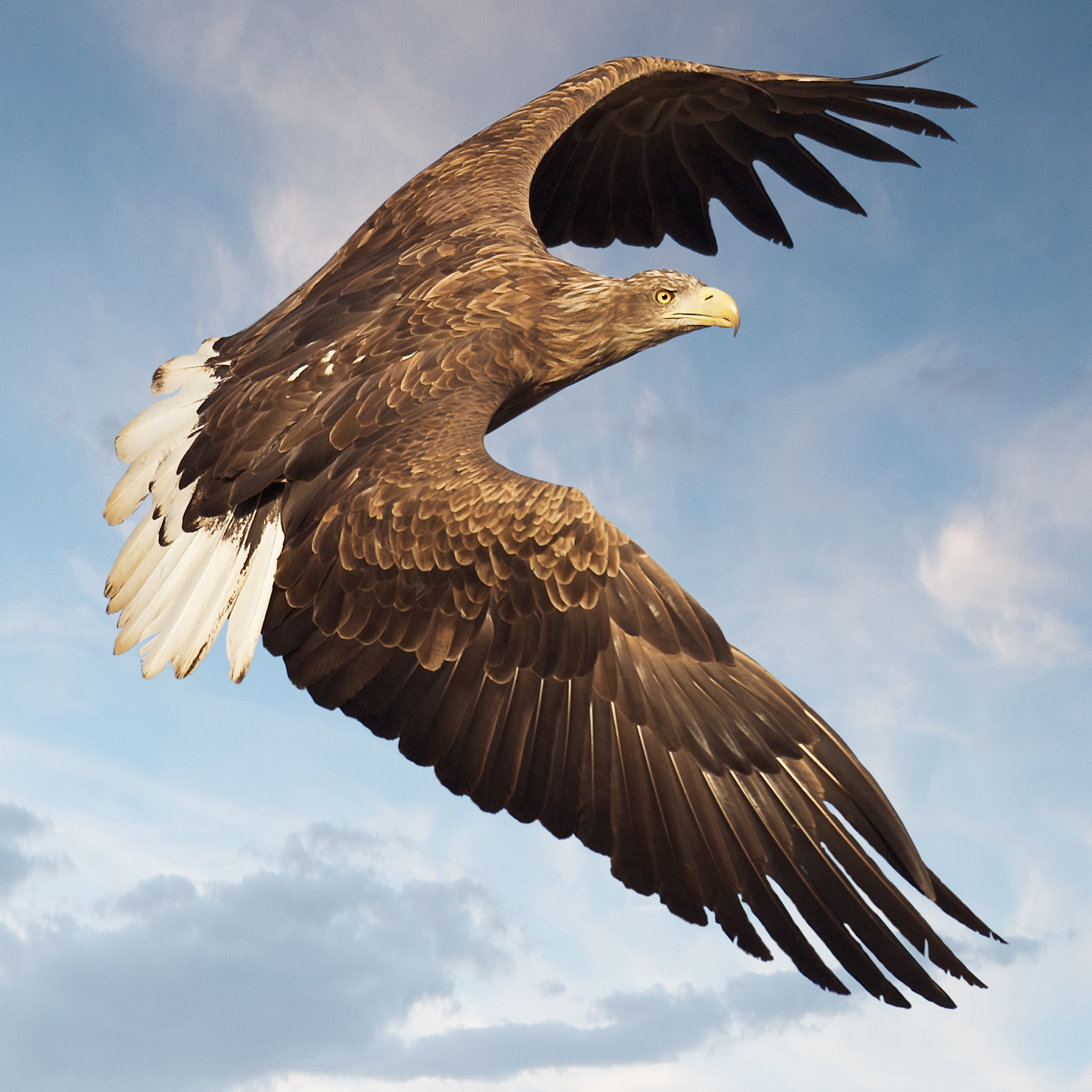 White-tailed eagles could soon soar free in southern England
White-tailed eagles could soon soar free in southern EnglandNatural England is considering licensing the release of the raptors in Exmoor National Park — and the threat to pets and livestock is considered to be low.
By Jack Watkins Published
-
 Britain's whale boom and and the predator that's far scarier than a great white shark, with wildlife cinematographer Dan Abbott
Britain's whale boom and and the predator that's far scarier than a great white shark, with wildlife cinematographer Dan AbbottThe wildlife cinematographer Dan Abbott joins us on the Country Life Podcast.
By Toby Keel Published
-
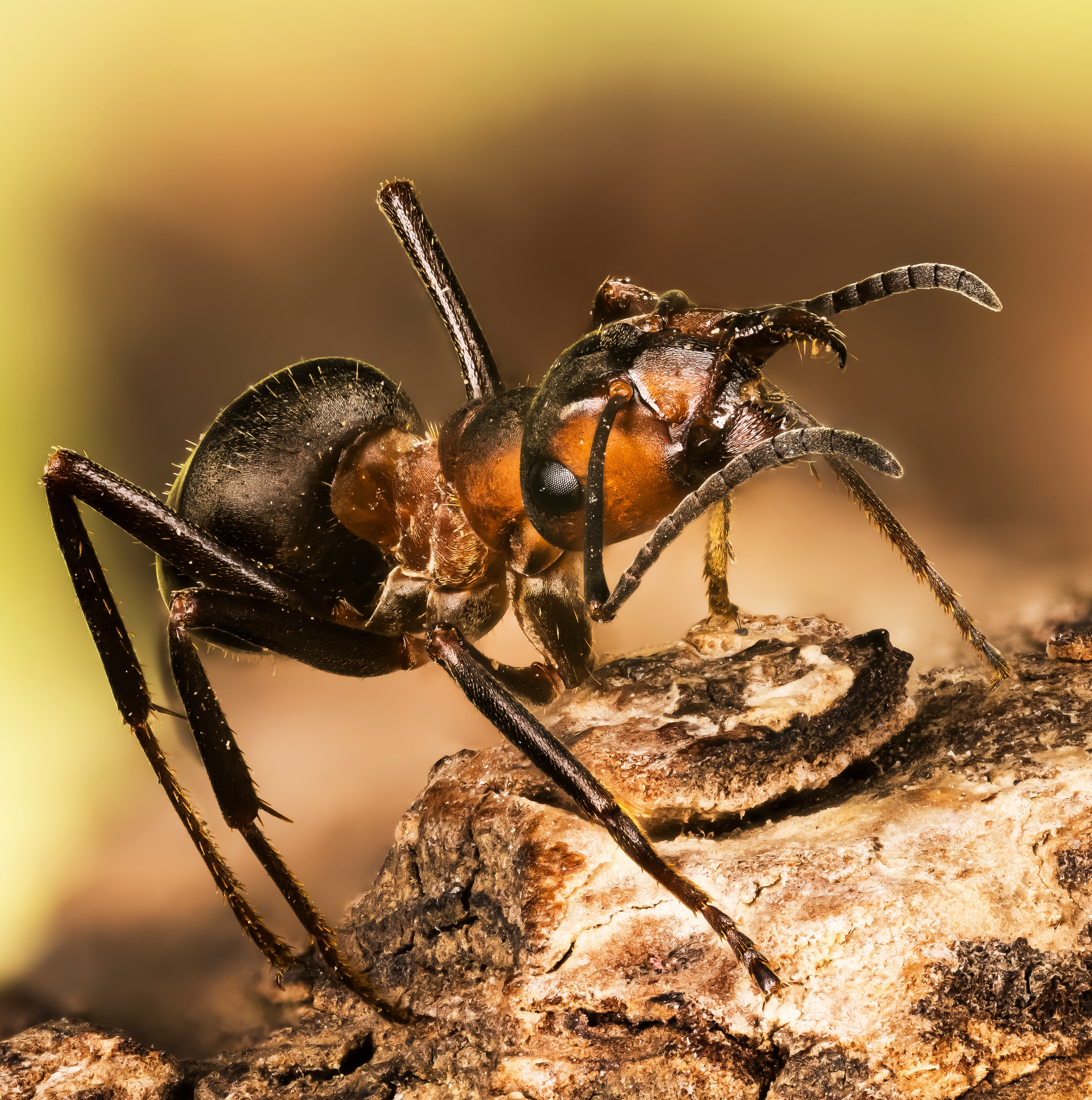 'They are inclined to bite and spray acid to protect territory': Meet the feisty red wood ant
'They are inclined to bite and spray acid to protect territory': Meet the feisty red wood antBy Ian Morton Published
-
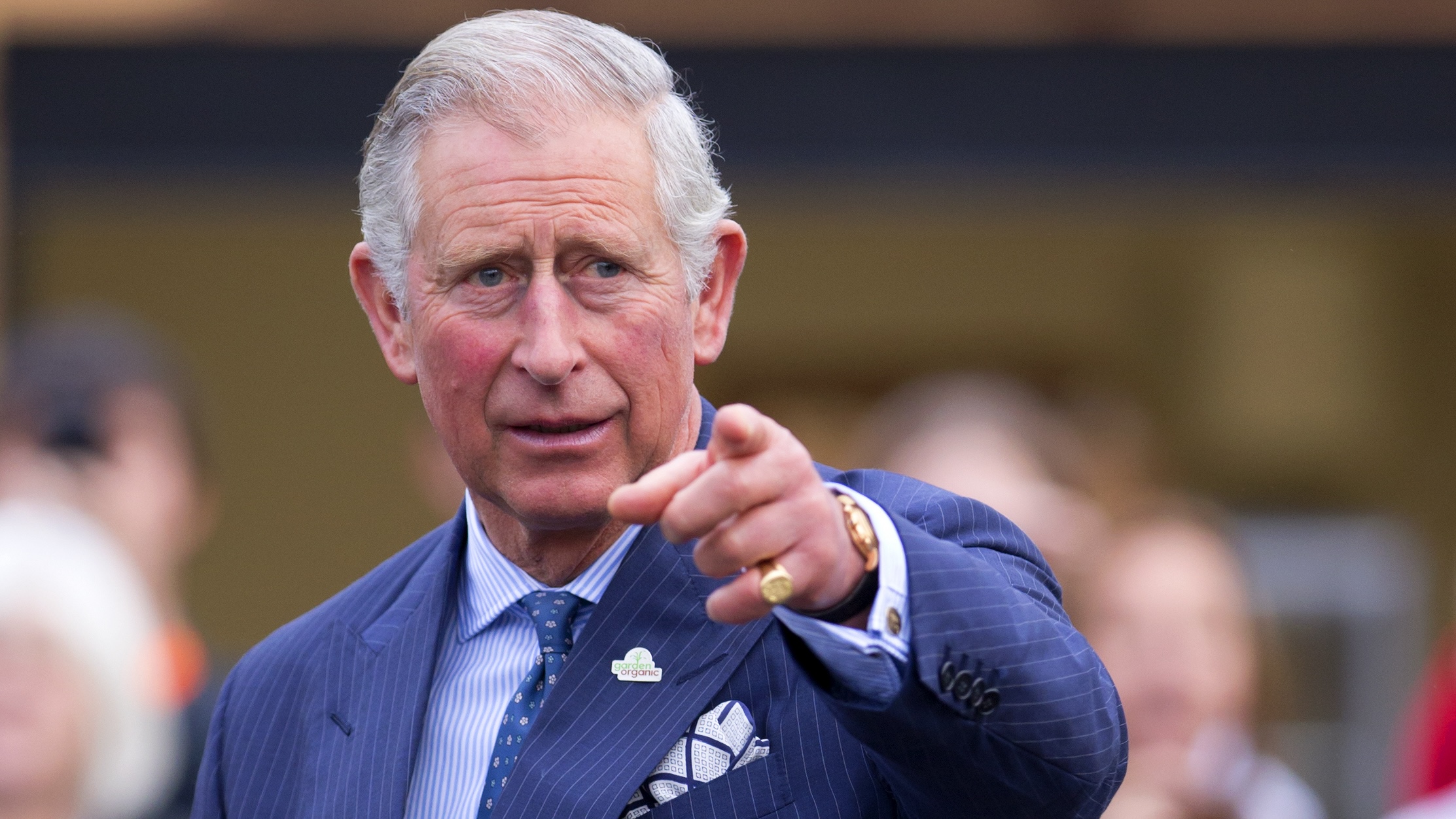 The King wants YOU: His Majesty's call-to-arms for under-35s across Britain
The King wants YOU: His Majesty's call-to-arms for under-35s across BritainThe King’s Foundation has launched its ‘35 under 35’ initiative — a UK-wide search for ‘the next generation of exceptional makers and changemakers’ who want to work holistically with Nature.
By Amie Elizabeth White Published
-
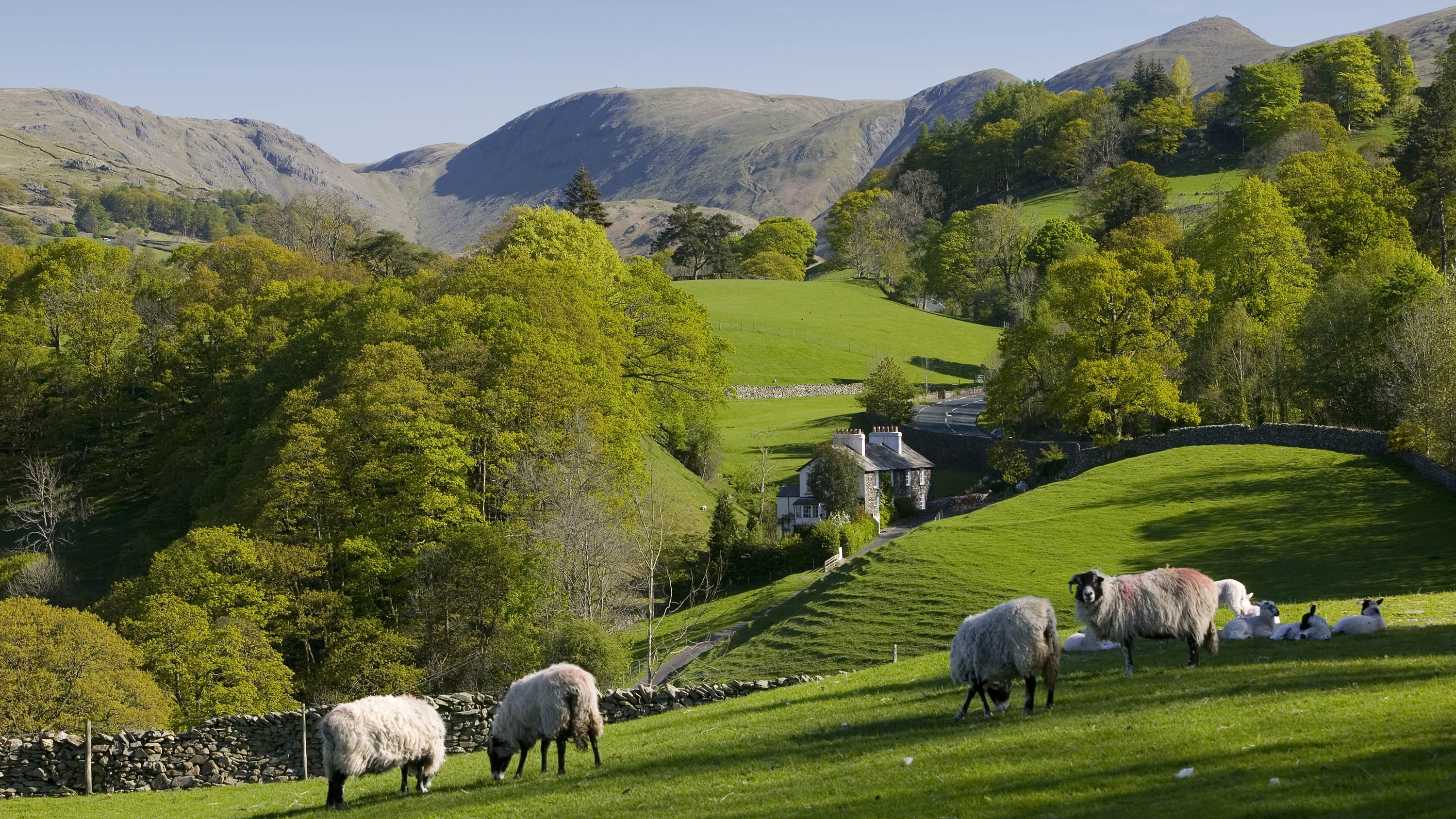 'A big opportunity for a small, crowded and beautiful country': Fiona Reynolds on how the Land Use Framework can make Britain better
'A big opportunity for a small, crowded and beautiful country': Fiona Reynolds on how the Land Use Framework can make Britain betterThe Government’s Land Use Framework should be viewed as an opportunity to be smarter with our land, but conflicts need to be resolved along the way says Fiona Reynolds, chair of the Food, Farming and Countryside Commission.
By Fiona Reynolds Published
-
 Dawn Chorus: A river comes to life, more mews is good mews, and the new 400-mile electric Volvo
Dawn Chorus: A river comes to life, more mews is good mews, and the new 400-mile electric VolvoRivers now have the legal right to flow, and to not be full of pollution. It's about time.
By James Fisher Published